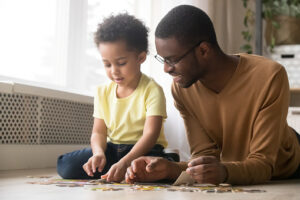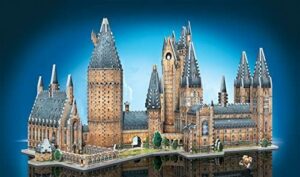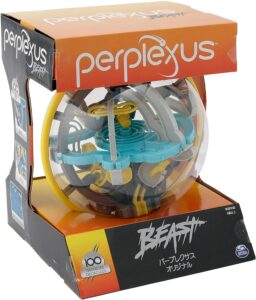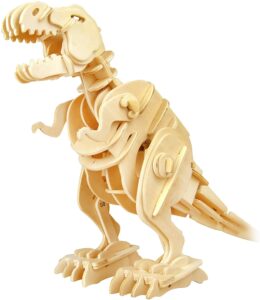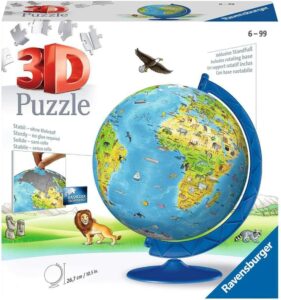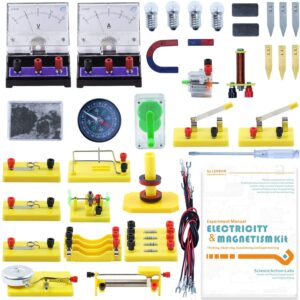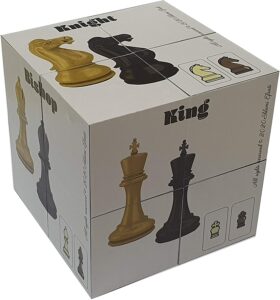Most of us grew up playing puzzles. I could clearly remember my dad tossing the puzzle section of a newspaper over to me to solve. I dreaded it at first but later got used to it and looked forward to it on so many occasions. What could be so special about puzzles that give people thrills? It is because puzzles are challenging and engaging. They push you beyond your ability. Before we go deep into it, let us look at the meaning of puzzles, then best 3D puzzles for kids.
Meaning of Puzzles
A puzzle is a literary or creative work designed to test your knowledge and ingenuity in its simplest form. It can be in the form of a game, toy, or problem. In a puzzle game, the player’s job is to identify patterns or pieces together logically to arrive at a solution. Often, people create puzzles for entertainment, but it can be a form of difficult mathematical problem in a classroom. People with a high level of inductive and critical thinking tend to solve puzzles better than others. Nevertheless, deep reasoning, practice, and inquiry can help any individual. Based on this, puzzles have been used in learning institutions to help kids develop 21st-century skills like critical thinking, problem-solving, and creativity.
3D Puzzles for Kids
3D puzzles for kids are different from the traditional puzzle game. They involve assembling a three-dimensional shape instead of a flat image. These puzzles appear to be the most challenging for kids as they are not straightforward. Also, they require more time to practice, and they are plastic materials
Mainly, 3D puzzles are for children of 7 years of age and older elementary learners. They improve kids’ critical thinking and problem-solving skills. Some of the regular shapes in 3D kids puzzles are ships, globe, and buildings.
Importance of Puzzles to Kids
Concentration:
Getting a puzzle game for your child if he/she has a short attention span might be a good idea. Playing a puzzle game often requires total concentration before you can get the solution. Hence, constant practice enhances the child’s ability to work on a task without distraction. To get the desired result, choose a puzzle appropriate to your child’s age to avoid frustration.
Specific Knowledge:
Makers of puzzles center them on different fields such as geography, biology and habitats, and body parts. The best of puzzles separates trees or animals’ components, making them a great learning strategy. When children see these distinct parts, they tend to ask questions about them. Caregivers can do their part by talking about the images, as this will enhance their subject-specific knowledge.
Problem-solving:
Puzzle increases children’s ability to solve problems. To solve a puzzle involves putting pieces together. Putting pieces together, in turn, requires thinking and developing different approaches to get the answer. Parents can help by giving their children strategies such as sorting details into colors and sizes. This technique shows them a way of breaking complex ideas into smaller ones. Children can employ this process in real-life situations.
Fine Motor Development:
Toddlers are naturally clumsy because their motor skill is still tender. They can hardly hold a cup of water without spilling it. Thankfully, puzzles polish children’s motor skills. When engaged in a puzzle, children pick, hold and grab and move items around before fixing them into the right position. With regular practice, they will grab things firmly.
Social skills:
Puzzles help children facilitate social skills. As they work cooperatively in riddles, they unconsciously learn from one another’s perspective through communication and exchanging ideas to develop the best possible solution. For instance, teachers can encourage kids to use statements like ‘Could you pass me the green circle?’
Self-esteem:
Toddlers generally need help carrying out activities like using the toilet, taking food, and drinking water. Puzzles, however, give them a different feeling. They provide them with the opportunity to work on a task themselves. So, when they complete the puzzle, they yell, yes, I did it! This action, in turn, gives them fulfillment and a sense of accomplishment. Also, it can boost their confidence to try other things in the world.
Language:
Puzzles that involve putting words together assist children in acquiring new vocabulary and add to their lexicon. Typically, children are interested in the pieces of animals or vehicles they are putting together. So, they ask questions about the features of the game they are solving. Answers to their inquiries help them learn new words and develop their speech as they repeat the vocabulary or use them in conversations.
Memory:
Puzzles keep the children’s minds active and enhance memory retention because they recognize orders and patterns. When children see repeated colors or shapes, their brains can make a meaningful connection.
Types of 3D Puzzles for kids
- Castle 3d Jigsaw puzzle
- Perplexus Puzzle
- Sorting puzzles
- Dinosaur 3-D Puzzle
- Globe Puzzle
- 3-d Chess Puzzle
Castle 3D Jigsaw Puzzle :
When completed, Castle 3D puzzles render a beautiful architectural design of castles of many centuries ago. Some of the castles used by the producers of this puzzle are Notre-Dame de Paris, King Arthur’s-Camelot, and Neuschwanstein Castle. Typically, the game involves interlocking the oddly shaped pieces together till you have a complete picture. Castle 3D Jigsaw puzzle is an excellent technique for teaching History. And they are suitable for 12 – 15 years old. The multiple striking buildings and tiny strange architectural designs make this puzzle interesting, entertaining, and educative.
Perplexus Puzzle:
This puzzle is an exception to the other types of 3D puzzles for kids as it has no loose pieces, making it perfect for carrying along. Also called a labyrinth game, Perplexus is a 3-d ball in a maze inside a translucent plastic sphere. One of the steps requires dropping the ball into a cup to take advantage of its three-dimensional nature. There are many obstacles to sail through to reach the end of the game. Undoubtedly, this is one of the most challenging yet entertaining 3-d puzzles for kids. To solve the game, you need a high level of spatial reasoning. Perplexus Epic 3D puzzle for kids can replace kids tablets. It keeps children busy and ensures that they are learning.
Dinosaur 3-D Puzzle :
Nobody loves dinosaurs like kids who have never seen them before as it gives them the thrill of an exciting adventure. Dinosaur 3-D puzzle is a design of dinosaurs with their parts taken apart. It is perfect for kids three years and above as the assembly process inspires thinking skills, reasoning skills, and creativity. Considering the lack of exposure to dinosaurs, kids may find the puzzle difficult at first, but it gets better as they play along. It also comes with a manual guide to put players through on how to assemble or disassemble. The pieces range from 47 to 60.
Globe Puzzle:
Also called a jigsaw globe, a Globe puzzle is a spherical assembly of puzzle pieces. When solved, Globe puzzles form a spherical shape. The game has a spherical substrate in the center, holding the pieces together. Sometimes, the puzzle pieces are magnetic to protect the lower portion of the globe from falling off. Aside from the regular spherical shape of the earth puzzle, it can also come in a moon shape. The pieces in this puzzle usually have numbers for easy assembling.
3-D Circuits Puzzles:
This puzzle requires kids or players to complete a circuit to light up the board. The circuit puzzle contains a series of wire segments, bulbs, and batteries. An electric charge comes from the battery to the wires that are connected to it. The player’s task is to rotate the pieces, so every wire and light bulb must connect without any gap. The rules of the game rules are: every wire and bulb must connect, all ends of the circuit must lead to the light bulbs without space.
3-D Chess Puzzle:
3-D Chess Puzzle is a variant of real chess. Unlike the original chess game, 3-D chess puzzles use multiple boards to represent different levels, allowing the chess pieces to move in three physical dimensions. The rules of the traditional chess game apply to the 3-d version. For instance, players record their moves like chess, the white and black armies take their standard position on boards 1 and 3, respectively, and all pieces can move naturally. Also, every piece can move in between the boards. The 3-D Chess puzzle requires patience, a high level of reasoning to maneuver your way around the game, and critical thinking. It is a puzzle that every kid must have because it trains them to be strategic and logical.
Conclusion
As we mentioned earlier, puzzles are a great way to help kids develop the necessary skills to survive. They provide a blueprint for successful learning in the classroom and enable students to thrive and fit into an ever-changing world. Mainly, 3-d puzzles for kids are great ways of having fun and relaxing while learning. Parents should maximize the advantages of the different types of 3-d puzzles to interact with their children positively. It is also a great technique to widen their horizon.

